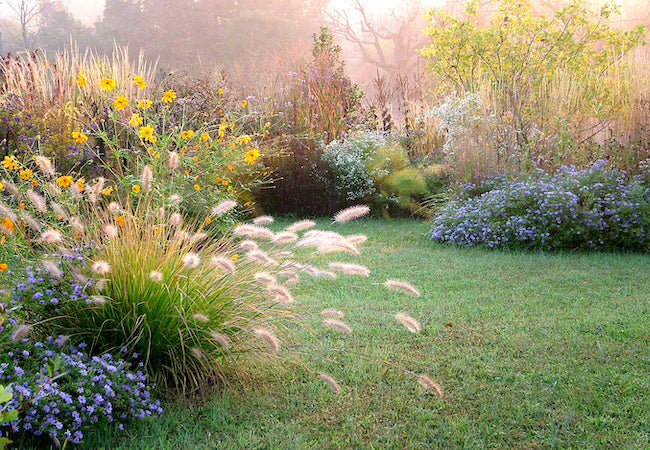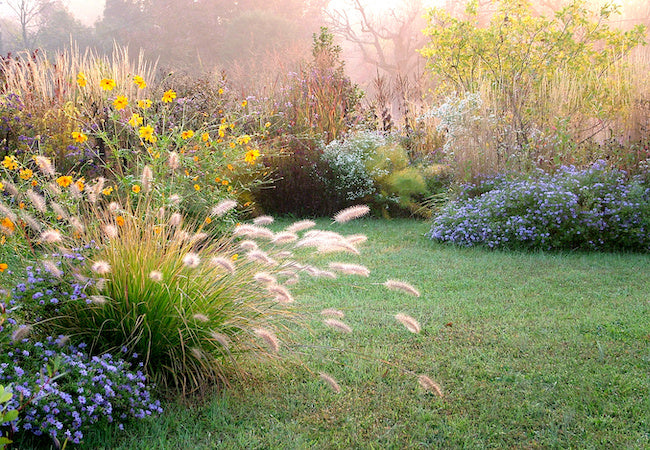How Sustainable Landscaping Saves You Money
Posted on December 30 2022,

We've all heard the joke before. “I spent $300 on gardening supplies so I could grow this $0.50 tomato.”
Anyone who has ever grown veggies in a raised bed will totally get this joke, because setting up a garden when you need to bring in outside materials like lumber and soil is expensive.
So let’s talk about the ways you can actually save time and money with your garden and your landscape. But first, I need to moderate your expectations. Building a sustainable yard—one that manages itself like an ecosystem and produces yields higher than your input—requires effort and time (mostly time, if I’m being honest). If you’re ready to play the long game and willing to be patient, let’s get started.
1. Think about yields beyond food
Do you mulch your garden or landscape beds every year? Where do you get the wood chips from? If you source your wood chips from an outside company, start looking at the trees and woody shrubs on your property as potential sources for wood chips. Depending on the size of your yard and the number of trees you have, a yearly pruning could easily provide you with enough organic material to mulch your entire garden! You might even consider growing a set of fast-growing trees that serve as both a privacy screen and a source of organic material, for example. Now, if you don’t have access to a wood-chipper, don’t forget that fallen leaves make an incredible mulch!
2. Build Your Own Soil & Compost
A simple 3-bin compost system (or three compost tumblers, if space is an issue) can help you create all of the soil you need for your garden and yard! These systems can vary in size, complexity, and cost, but can be as inexpensive and simple as fashioning wooden pallets together to form three “corrals” for your compost. Kitchen waste, garden trimmings, fallen leaves, and even shredded junk mail all make amazing additions to your compost pile.
Soil can also be built right where it lays by adding thick layers of “brown” mulch like leaves and wood chips around thinner layers of “green” mulch like grass clippings and kitchen scraps! This is fastest and most effective in raised beds, but also works for in-ground gardens and landscaping!
3. Drought Tolerant Plants Lower Your Water Bill
60% of potable drinking water in the US is going to outdoor irrigation! This inevitably reflects on your water bill. My goal as your sustainable landscape designer is to reduce your need for supplemental irrigation as much as we possibly can! In many cases (depending on your climate) we can take your irrigation need down to zero or almost zero by planting drought-tolerant plants and implementing greywater use and rainwater harvesting. Even if that isn’t feasible for you, simply planting communities of native, drought tolerant plants will reduce your irrigation needs significantly for a notable drop in water costs.
4. Strategic Landscaping Can Lower Your Energy Bill
Did you know that plants can significantly lower the temperature of your property? Look at Brad Lancaster’s home in Tucson, Arizona as an example. He leveraged rainwater harvesting in order to create a shady, green oasis with an average temperature about 15 degrees lower than surrounding Tucson.
By being strategic about when and where sunlight and shade heat and cool your property, we can greatly reduce your energy costs. For example, a row of deciduous trees (trees that shed their leaves in winter) can shade your home from sunlight in the summer, but allow sunlight to pass through in winter, passively heating and cooling your home so it requires far less energy to keep your indoor temperatures comfortable.
Creating a sustainable yard is an investment of time, energy, and money––but with the right strategy and some patience, these investments end up paying for themselves many times over.


